#monteux
Explore tagged Tumblr posts
Text

Montreux, Switzerland
2 notes
·
View notes
Audio
Elgar | Enigma Çeşitlemeleri, Tema & çeş.1

18 notes
·
View notes
Text
in the background.
My dumb mood.
#nils frahm#monteux jazz festival#passion#my music#nostalgia#melancholy#nihilism#my dumb mood#my blank mind#german artist#neoclassical music#SoundCloud
1 note
·
View note
Text

"Jardin zen" (Jardin Eric BORJA, Beaumont-Monteux, 26-FR)
© Claude Vergoz, 2023- Leave captions and credits, no re-blogs to NSFW/18+
59 notes
·
View notes
Text
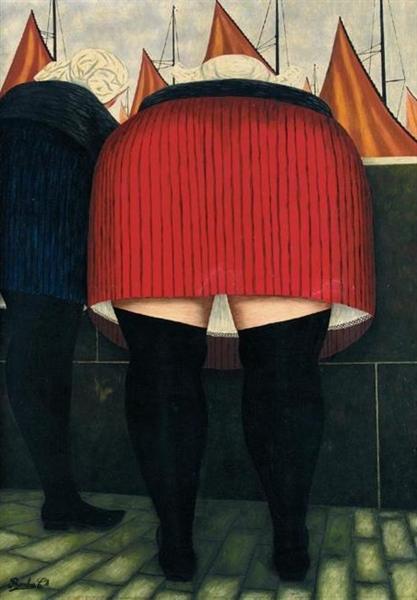
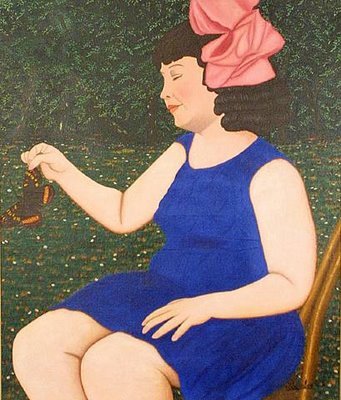
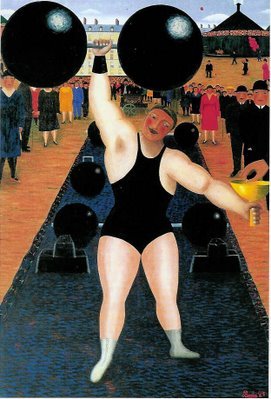
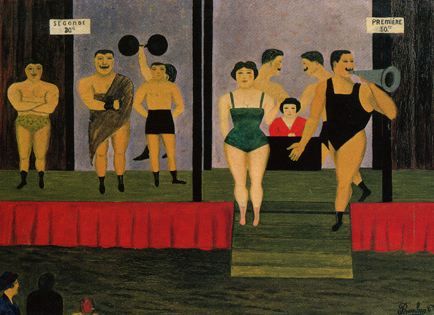
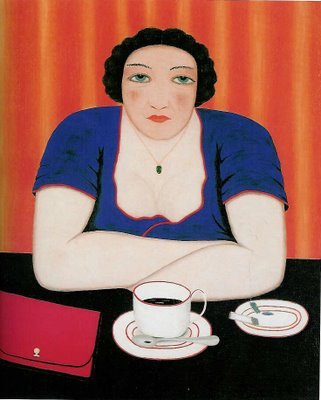
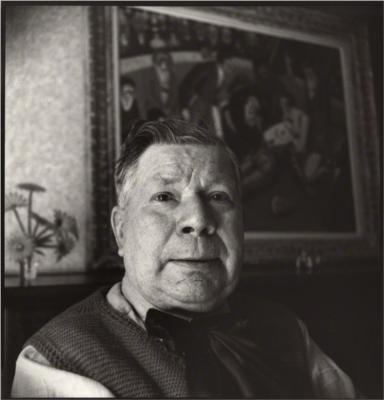
Camille Bombois (1883 – 1970) was a French naïve painter especially noted for paintings of circus scenes.
Bombois was born in Venarey-les-Laumes in the Côte-d'Or, in humble circumstances. His childhood was spent living on a barge and attending a local school until the age of twelve, when he became a farm worker. During his free time he drew and competed in wrestling competitions at local fairs. He became a champion local wrestler before joining a traveling circus as a strongman and wrestler.
In 1907, Bombois fulfilled his dream of moving to Paris, where he married and worked as a railway laborer, eventually finding a night job at a newspaper printing plant handling heavy newsprint rolls. Despite the exhausting nature of his job he painted from dawn to dusk, sleeping little. He showed his paintings in sidewalk exhibitions, but his earliest paintings, revealing the influence of the old masters in their subdued use of color, attracted few buyers.
1914 marked the beginning of four-and-a-half years of military service in World War I. Bombois spent much of it on the front line, earning three decorations for bravery. Upon his return home, encouraged that his wife had succeeded in selling a number of his paintings in his absence, he resumed his routine of night labor and daytime painting. In 1922, his sidewalk displays in Montmartre began attracting the attention of collectors. The art dealer Wilhelm Uhde "discovered" him in 1924, and exhibited Bombois' work in the Galeries des Quatre Chemins in 1927.[1] In 1937, his works were shown in the exhibition "Maîtres populaires de la réalité" in Paris. His first solo show was in 1944 at the Galerie Pétridès. Critics compared Bombois' work to that of Henri Rousseau, which it resembled in its naïve drawing, crisp delineation of form, and attention to detail, although Bombois was less of a fantasist than Rousseau.
The paintings of his maturity are bold in color, featuring strong contrasts of black, bright reds, blues and electric pinks. Drawing from his own experiences, he often painted circus performers and landscapes with fishermen. His paintings of women are emphatic in their carnality, and his landscapes are notable in their careful attention to space, and to the effects of reflected light on water. Bombois' works are on view in many public collections, notably the Musée Maillol in Paris.
In 2023, Bavarian town of Passau in Germany restituted a painting by Bombois that had been looted from Jewish collector Marcel Joseph Monteux, who was murdered in Auschwitz-Birkenau on August 15, 1944.
(wiki)
10 notes
·
View notes
Photo

Portrait en pied de l'actrice Danielle Godet pour l'Agence Monteux.
Années 1950
4 notes
·
View notes
Text

"The Journey Cleo," Part 15: "Mansion."
8 FGH 90 9 TY 3 FGH 12 FGH 56 9 9 34 FGH 23 67 4 7 5 8 FGH YU 9 ER FGH 34 4 9 UI 3 KM FGH FGH 6 9 7 M
Ily besties💖🚽
Link to spiral staircase pic:
I didn't know that just because you clicked on the "Creative commons license" on Google that it didn't mean all the pictures were royalty free. My bad for either misunderstanding my old computer teacher or her misunderstanding.
Idk if I can source all of these pictures, but at some point, I'll try. These abandoned house pics, along with the picture of the white house, were taken from the creative commons tab on Google.
#t.j.c.#the journey cleo#collage#tjc#TJC14#weirdcore#twilight renesmee#weirdcore aesthetic#tjc3#collage art#digital collage#artists on tumblr#artist#collage artist#Spotify
3 notes
·
View notes
Video
youtube
Garden Furniture - Gives Your Beautiful Garden an Exclusive Look
On the off chance that you are looking for basic, climate cordial and classic furniture to embellish your beautiful garden, then, at that point, garden furniture is perfect for you. Staggering plans in traditional and contemporary styles are accessible at prices to suit each spending plan. All that you really want to make your garden look find out more here more appealing and welcoming is accessible at this awesome outlet. They have a wide scope of furniture, seats, tables, chairs, loungers, and swing seats in different plans and colors to address each issue of their clients.
The Kent Hardwood seat or the collapsing hardwood companion seat is great for couples or companions to participate out of gear talk, while partaking in the superb setting of the garden. The Saigon Hardwood stowaway set or the Pink Painted Bistro set is modern and stylish in its look. Garden furniture additionally offers an exclusive Windsor three-piece set, created from family dried lumber, which comes in honey color finish.
In the event that you wish to make some tranquil memories with your companion over some tea, resign to a corner in the beautiful garden, and loosen up on a tea for two garden furniture set. Modern assembling strategies joined with traditional carpentry style ensure additional strength and ideal completion to this piece of furniture, produced with climate agreeable lumber, got from inexhaustible sources.
Rattan garden furniture is one more superb thing from the scope of items accessible at garden furniture. Totally solid, yet adaptable past creative mind makes them the much sought after outdoor furniture. In the event that you really want furniture for an outdoor engaging region or a center, these phenomenal items meet all your furniture assumptions, and then some. For your gathering of loved ones, the Balmoral table with six Geneva or Woburn chairs offers a definitive in comfort and style. The Blenheim set with Woburn chairs is perfect to sit back in an easygoing discussion, over vast cups of tea in a pure area of the garden.
The Toledo set with a couple of Cordoba chairs makes an exclusive style explanation alongside the Monteux set with six Geneva chairs. The Wellington set with four Geneva chairs gives the garden a totally new look.
Garden furniture is additionally accessible in teak, which is exceptionally solid. It contains defensive oils, which gives the furniture a lengthy life. Many people prefer teak furniture for their gardens. That is the justification for why the bistro and the companion set are extremely popular pieces of furniture among garden owners. Teak coffee table and armchair sets mix impeccably with any garden settings. The decoration hammocks with teak footrest and coffee table are the ideal furniture to spend your sluggish end of the week nights following an intense and rushed week at the office.
3 notes
·
View notes
Text

Aujourd’hui chez ART & VIE
Vendredi 17 JANVIER à 18h15
Vernissage de l'exposition "L’ŒIL EN RUTH"
par Patrick ZAMBELLI
Galerie 98 rue porte de Monteux / Carpentras
Exposition Jan>Févr.25
En espérant vous retrouver sur l'un de nos évènements.
L'équipe d'Art & Vie
0 notes
Text

Dr. Paul Douglas Freeman (January 2, 1936 – July 21, 2015) was a conductor, born in Richmond, Virginia.
He was a conductor, composer, and founder of the Chicago Sinfonietta. He earned his BA, MA, and Ph.D. from the Eastman School of Music. A Fulbright Scholarship enabled him to study for two years at the Hochschule für Musik in Berlin with Ewald Lindemann. He studied conducting with Pierre Monteux at the American Symphony Orchestra.
He began his conducting career as the music director of the Opera Theatre of Rochester for six years. He then held posts as associate conductor of the Dallas Symphony Orchestra and Detroit Symphony Orchestra. These were followed by a stint as principal guest conductor of the Helsinki Philharmonic. He served as music director of the Victoria Symphony in Canada. He founded the Chicago Sinfonietta of which he remained the Musical Director until his retirement. Concurrently with his time with the Chicago Sinfonietta, he held the post of music director and chief conductor of the Czech National Symphony Orchestra in Prague. Following his retirement from the Chicago Sinfonietta, he was named Emeritus Music Director of the orchestra.
He can be considered one of the most successful recording conductors from the US. He has a nine-LP series that follows the history of African American symphonic composers from 1750 to the time of recording. This series garnered a lot of attention on the Columbia Records label during the 1970s and has since been re-released as a Sony Classical boxed set of ten CDs, published in 2019. He collaborated with pianist Derek Han to record all of the piano concertos of Mozart, Haydn, and Beethoven. In his work with numerous orchestras, he has been a part of over a dozen televised productions in North America and Europe. He has been nominated for two Emmy Awards.
He married Cornelia Freeman and they had one son. #africanhistory365 #africanexcellence
1 note
·
View note
Text
J.S. Bach* - Yehudi Menuhin, Georges Enesco*, Pierre Monteux - Concertos Pour Violon N° 1 En La Mineur, BWV 1041 / N°2 En Mi Majeur, BWV. 1042 / Double Concerto En Re Mineur, BWV. 1043 (LP, Comp, Mono)
Vinyl(VG++) Picture Cover(VG++) / / more than VG+ conditions, in good shape / コンディション 盤 : Very Good Plus (VG+) コンディション ジャケット : Very Good Plus (VG+) コンディションの表記について [ M > M- > VG+ > VG > G+ > G > F > P ] レーベル : La Voix De Son Maître – 2C 051-43070 フォーマット : Vinyl, LP, Mono 生産国 : France 発売年 : 1981 ジャンル : Classical スタイル : Baroque 収録曲 : . Concerto N° 1 En La Mineur, BWV 1041 Pour Violon Et…
0 notes
Text
Métronome AQWO 2 Hybrid DAC + SACD/CD + Streamer Review
https://www.audiophilia.com/reviews/2024/7/3/mtronome-aqwo-2-hybrid-dac-sacdcd-streamer The ESOTERIC SACD of Brahms’ Symphony No. 2 (originally released on Philips in 1963) is a spectacular example of ESOTERIC’s famous remastering for compact discs (their new vinyl remasterings are superb, too). The London Symphony Orchestra sounds dramatic and very beautiful as guided by Pierre Monteux. All…

View On WordPress
0 notes
Text
Igor Stravinsky (1882-1971)
Igor Stravinsky (1882-1971)Three Movements from Petrushka: The Shrovetide FairThree Movements from Petrushka: The Shrovetide Fair ·Arthur Rubinstein, piano · Igor StravinskyNew Highlights from "Rubinstein at Carnegie Hall" - Recorded During the Historic 10 Recitals of 1961Please, subscribe to our Library. Thank you!Best Sheet Music download from our Library.Igor Stravinsky's PetrushkaIgor Stravinsky (short bio)
Igor Stravinsky (1882-1971)
Three Movements from Petrushka: The Shrovetide Fair
https://www.youtube.com/watch?v=cSSWuIfb0LU Three Movements from Petrushka: The Shrovetide Fair · Arthur Rubinstein, piano · Igor Stravinsky New Highlights from "Rubinstein at Carnegie Hall" - Recorded During the Historic 10 Recitals of 1961

Igor Stravinsky's Petrushka
Petrushka (French: Pétrouchka; Russian: Петрушка) is a ballet and orchestral concert work by Russian composer Igor Stravinsky. It was written for the 1911 Paris season of Sergei Diaghilev's Ballets Russes company; the original choreography was by Michel Fokine and stage designs and costumes by Alexandre Benois, who assisted Stravinsky with the libretto. The ballet premiered at the Théâtre du Châtelet on 13 June 1911 with Vaslav Nijinsky as Petrushka, Tamara Karsavina as the lead ballerina, Alexander Orlov as the Moor, and Enrico Cecchetti the charlatan. Petrushka tells the story of the loves and jealousies of three puppets. The three are brought to life by the Charlatan during the 1830 Shrovetide Fair (Maslenitsa) in Saint Petersburg, Russia. Petrushka loves the Ballerina, but she rejects him. She prefers the Moor. Petrushka is angry and hurt, and challenges the Moor. The Moor kills him with his scimitar. Petrushka's ghost rises above the puppet theatre as night falls. He shakes his fist at the Charlatan, then collapses in a second death. The gestation of Petrushka was not a straightforward matter. While completing The Firebird during the spring of 1910, Stravinsky had a "vision" of a solemn pagan rite: sage elders, seated in a circle, watching a young girl dance herself to death. They were sacrificing her to propitiate the god of Spring. Such was the theme of The Rite of Spring. Immediately following the stunning success of The Firebird in June 1910, Diaghilev approached Stravinsky about a new ballet; the composer proposed the Rite theme. Diaghilev accepted in principle and suggested that the premiere might take place during the Paris season of the Ballets Russes during the spring of 1912. At the end of September 1910, Diaghilev went to visit Stravinsky in Clarens, Switzerland, where he was living at the time. Expecting to discuss the new ballet, Diaghilev was astonished to find Stravinsky hard at work on a totally different project. Stravinsky, it seems, had had another vision: "I saw a man in evening dress, with long hair, the musician or poet of the romantic tradition. He placed several heteroclite objects on the keyboard and rolled them up and down. At this the orchestra exploded with the most vehement protestations – hammer blows, in fact …" Later, Stravinsky wrote: "n composing the music, I had in my mind a distinct picture of a puppet, suddenly endowed with life, exasperating the patience of the orchestra with diabolical cascades of arpeggios. The orchestra in turn retaliates with menacing trumpet blasts." Although Stravinsky had conceived the music as a pure concert work—a Konzertstück, Diaghilev immediately realized its theatrical potential. The notion of a puppet put Diaghilev in mind of Petrushka, the Russian version of Punch and Judy puppetry that had formed a traditional part of the pre-Lenten Carnival festivities in 1830s St. Petersburg. Stravinsky composed the music during the winter of 1910–11 for Diaghilev's Ballets Russes. It was premièred in Paris at the Théâtre du Châtelet on 13 June 1911 under conductor Pierre Monteux, with choreography by Michel Fokine and sets by Alexandre Benois. The title role was danced by Vaslav Nijinsky. The work is characterized by the so-called Petrushka chord (consisting of C major and F♯ major triads played together), a bitonality device heralding the appearance of the main character. The original 1911 version of Petrushka is scored for the following orchestra. Stravinsky's 1946 scoring is for a smaller orchestra: Compared to the 1911 version, the 1946 version (given in 1947) requires 1 less flute; 2 fewer oboes, but a dedicated cor anglais player instead of one doubled by the fourth oboe; 1 less clarinet; 2 fewer bassoons, but a dedicated contrabassoon; neither of the 2 cornets, but an additional trumpet; 1 less snare drum and no tenor drum, thus removing the offstage instruments; no glockenspiel; and 1 less harp. While the original idea was Stravinsky's, Alexandre Benois provided the ethnographic details of the Shrovetide Fair and the traditions of the Russian puppet theater. And although Petrushka is frequently cited as an example of the complete integration of libretto, music, choreography, and scenic design, Stravinsky had composed significant portions of the music (chiefly the Second Tableau) before Benois became involved with the project. Petrushka begins with a festive orchestral introduction based, in part, on historical Russian street-hawkers' cries. The curtain rises to reveal St. Petersburg's Admiralty Square during the 1830s. The stage set (also by Benois) depicts several hucksters' booths, a ferris-wheel, a carousel, and (upstage center) a puppet theater. A crowd has gathered for the Shrovetide Fair (known as Maslenitsa), the carnival (analogous to Mardi Gras) preceding Lent. In Fokine's original choreography, a group of Drunken Revelers emerges from the crowd, dancing to Stravinsky's adaptation of the folk-tune "Song of the Volochobniki" ("Dalalin' Dalalin'" from Rimsky-Korsakov Op. 24 No. 47). Suddenly, the festive music is interrupted by strident brass announcing the appearance of the Master of Ceremonies on the balcony of his booth. The equivalent of a carnival "barker", he boasts of the attractions to be seen within. The squeaks of a street-organ are heard (clarinets and flutes) as an Organ-Grinder and Dancing Girl emerge from the crowd, which at first pays little attention as the barker continues to shout. The Dancer moves downstage and begins to dance to another Russian folk-song, "Toward Evening, in Rainy Autumn", while playing the triangle. At the other end of the stage, a second Dancing Girl appears, accompanied by a music box (suggested in the orchestra by the celesta). The two Dancing Girls compete for the crowd's attention to the strains of a ribald French music-hall song about a woman with a wooden leg: "Une Jambe de bois". Both tunes are repeated. The Drunken Revelers return (again to the "Song of the Volochobniki") interrupted several times by the Barker's boasts. The street-hawkers' cries of the very opening are heard once more. Suddenly, two drummers summon the crowd to the puppet theater with deafening drumrolls. The Magician (sometimes called the "Charlatan") appears to mystical groans from the bassoon and contrabassoon. When he has everyone's attention, he produces a flute and begins to play a long, improvisatory melody. The curtain of the puppet theater rises to reveal three puppets hanging on the wall: the Moor, the Ballerina, and Petrushka. When the Magician touches them with his flute (to chirps in the orchestra), they seem to awaken. The astonished crowd watches as, with a wave of the Magician's hand, the three puppets begin a vigorous Russian Dance (based on two more Russian folk-tunes: "A Linden Tree Is in the Field" and "Song for St. John's Eve"). In Fokine's masterly choreography, they first begin to move their feet (while still hanging on the wall), then burst forth from the puppet theater into the midst of the crowd. The Moor (resplendent in turban and exaggerated pantaloons) is swashbuckling. The Ballerina dances perpetually en pointe. Petrushka, on the other hand, is wooden and awkward. It becomes apparent Petrushka loves the Ballerina; but she has eyes only for the Moor. The Magician calls the dance to a halt; the curtain falls rapidly. Although Petrushka's room is inside the puppet theater, the Benois design is fantastical, portraying the night sky with stars and a half-moon; abstract icebergs (or snow-capped mountains), and a prominent portrait of the Magician. Drumrolls announce the beginning of the Second Tableau. Without an Introduction, the music begins menacingly. "A foot kicks him onstage; Petrushka falls…" As Petrushka gradually pulls himself together, we hear a strange arpeggio in the clarinets: this is the famous "Petrushka chord" (consisting of juxtaposed triads of C major and F♯ major). Petrushka gets to his feet (although shakily) to the accompaniment of waves of arpeggios from the piano (revealing the music's origins in Stravinsky's Konzertstück). The "Petrushka Chord" returns, now violently scored for trumpets, marked in the score "Petrushka's Curses", directed at the portrait of the Magician. The music turns lyrical as Petrushka falls to his knees and mimes (in turn) his self-pity, love for the Ballerina, and hatred of the Magician. The Ballerina (still en pointe) sneaks into Petrushka's room, at first unnoticed. As soon as Petrushka sees her, he begins a manic, athletic display of leaps and frantic gestures (although he was barely able to stand before she arrived). Frightened by his exuberance, the Ballerina flees. Petrushka falls to the floor to the mocking of the clarinets. Another passage of arpeggios for piano grows into a second round of curses directed at the Magician, again represented musically by the "Petrushka Chord", this time scored for full orchestra. For just a moment, Petrushka peers out of his room at the crowd assembled in Admiralty Square (Stravinsky provides a brief reference to the "crowd music" of the First Tableau). Then, Petrushka collapses as we hear a taunting reprise of the clarinets playing the "Petrushka Chord", followed by an odd trumpet call signalling "blackout, curtain." As before, drumrolls link the Third Tableau to its predecessor (in the 1911 score, Stravinsky directs that this drumroll should be omitted in concert performance). In sharp contrast to the darkness of Petrushka's Room, the brilliant colors of the Benois design for the Moor's Room evoke a romanticized desert: palm trees, exotic flowers, sand. In Fokine's choreography, the Moor reclines on a divan playing with a coconut. He then jumps to his feet and attempts to cut it with his scimitar. When he fails he believes that the coconut must be a god and proceeds to pray to it. The Charlatan places the Ballerina in the Moor's room. The Ballerina is attracted to the Moor's handsome appearance. She plays a saucy tune on a toy trumpet (represented by a cornet in the original 1911 orchestration) and then dances with the Moor in a waltz (the themes taken from Joseph Lanner's Op. 165 No. 1 and Op. 200 No. 1). Petrushka finally breaks free from his cell; he interrupts the seduction of the Ballerina. Petrushka attacks the Moor but soon realizes he is too small and weak. The Moor beats Petrushka. The ballerina faints. The clown-puppet flees for his life, with the Moor chasing him, and escapes from the room. The fourth and final scene returns to the carnival. Some time has passed; it is now early evening. The orchestra introduces a chain of colourful dances as a series of apparently unrelated characters come and go about the stage as snow begins to fall. The first and most prominent is the Wet-Nurses' Dance, performed to the tune of the folk song "Down the Petersky Road". Then comes a peasant with his dancing bear, followed in turn by a group of a gypsies, coachmen and grooms and masqueraders. As the merrymaking reaches its peak, a cry is heard from the puppet-theater. Petrushka suddenly runs across the scene, followed by the Moor in hot pursuit brandishing his sword, and the terrified Ballerina chasing after the Moor, fearful of what he might do. The crowd is horrified when the Moor catches up with Petrushka and slays him with a single stroke of his blade. The police question the Charlatan. The Charlatan seeks to restore calm by holding the "corpse" above his head and shaking it to remind everyone that Petrushka is but a puppet. As night falls and the crowd disperses, the Charlatan leaves, carrying Petrushka's limp body. All of a sudden, Petrushka's ghost appears on the roof of the little theatre, his cry now in the form of angry defiance. Petrushka's spirit thumbs its nose at his tormentor from beyond the wood and straw of his carcass. Now completely alone, the Charlatan is terrified to see the leering ghost of Petrushka. He runs away while allowing himself a single frightened glance over his shoulder. The scene is hushed, leaving the audience to wonder who is "real" and who is not. The work is divided into four tableaux (scenes). The score further indicates the following episodes: During rehearsals for the 1911 premiere, Stravinsky and other pianists including Russian composer Nikolai Tcherepnin used a piano four-hand version of the score. This has never been published, although Paul Jacobs and Ursula Oppens, among other pianists, have played it in concert. In 1921, Stravinsky created a virtuosic and celebrated piano arrangement for Arthur Rubinstein, Trois mouvements de Petrouchka, which the composer admitted he could not play himself, for want of adequate left-hand technique. Herbert Stothart, who composed the score for The Wizard of Oz, was visited by Stravinsky at MGM in 1936. Stravinsky gifted Stothart a personal, signed copy of Petrushka. As the main characters in the film run through the Deadly Poppy Field, the opening to the fourth tableau can be heard briefly. In 1946, he thinned the ballet's scoring, in part because the original was not covered everywhere by copyright. The rapid continuous timpani and snare-drum notes that link each scene, optional in 1911, are compulsory in this version, which was published in 1947. The Ballerina's tune is assigned to a trumpet in 1946 in place of a cornet, and the 1946 version provides an optional fff (fortississimo) near the piano conclusion. Stravinsky also removed some difficult metric modulations in the First Tableau. Separately Stravinsky created a suite for concert performance, an almost complete version of the ballet but cutting the last three sections. In 1956, an animated version of the ballet appeared as part of NBC's Sol Hurok Music Hour. It was personally conducted by Stravinsky himself and was the first such collaboration. Directed by animator John David Wilson with Fine Arts Films, it has been noted as the first animated special ever to air on television. In 1988, Maddalena Fagandini directed a version of Petrushka along with The Sleeping Beauty (Tchaikovsky), The Nutcracker (and the Mouse King) (Tchaikovsky) and Coppélia (Delibes) in the BBC puppet film Musical Tales which was released in VHS. Basil Twist debuted his puppetry version of Petrushka at Lincoln Center in 2001; it was performed as well at New York City Center's 2009 Fall for Dance Festival. A full transcription of the 1911 version for symphonic wind ensemble in the original key was made by Don Patterson.
Igor Stravinsky (short bio)
Igor Fyodorovich Stravinsky (17 June 1882 – 6 April 1971) was a Russian composer and conductor with French citizenship (from 1934) and American citizenship (from 1945). He is widely considered one of the most important and influential composers of the 20th century and a pivotal figure in modernist music. Born to a famous bass in Saint Petersburg, Russia, Stravinsky grew up taking piano and music theory lessons. While studying law at the University of Saint Petersburg, he met Nikolai Rimsky-Korsakov and studied under him until his death in 1908. Igor Stravinsky met the impresario Sergei Diaghilev soon after, who commissioned the composer to write three ballets for the Ballets Russes's Paris seasons: The Firebird (1910), Petrushka (1911), and The Rite of Spring (1913), the last of which caused a near-riot at the premiere due to its avant-garde nature and later changed the way composers understood rhythmic structure. Stravinsky's compositional career is often divided into three periods: his Russian period (1913��1920), his neoclassical period (1920–1951), and his serial period (1954–1968). During his Russian period, Stravinsky was heavily influenced by Russian styles and folklore. Works such as Renard (1916) and Les noces (1923) drew upon Russian folk poetry, while compositions like L'Histoire du soldat (1918) integrated these folk elements with popular musical forms, including the tango, waltz, ragtime, and chorale. His neoclassical period exhibited themes and techniques from the classical period, like the use of the sonata form in his Octet (1923) and use of Greek mythological themes in works like Apollon musagète (1927), Oedipus rex (1927), and Persephone (1935). In his serial period, Stravinsky turned towards compositional techniques from the Second Viennese School like Arnold Schoenberg's twelve-tone technique. In Memoriam Dylan Thomas (1954) was the first of his compositions to be fully based on the technique, and Canticum Sacrum (1956) was his first to be based on a tone row. Stravinsky's last major work was the Requiem Canticles (1966), which was performed at his funeral. While many supporters were confused by Stravinsky's constant stylistic changes, later writers recognized his versatile language as important in the development of modernist music. Stravinsky's revolutionary ideas influenced composers as diverse as Aaron Copland, Philip Glass, Béla Bartók, and Pierre Boulez, who were all challenged to innovate music in areas beyond tonality, especially rhythm and form. In 1998, Time magazine listed Stravinsky as one of the 100 most influential people of the century. Stravinsky died of pulmonary edema on 6 April 1971 in New York City, having left six memoirs written with his friend and assistant Robert Craft, as well as an earlier autobiography and a series of lectures. Read the full article
#SMLPDF#noten#partitura#sheetmusicdownload#sheetmusicscoredownloadpartiturapartitionspartitinoten楽譜망할음악ноты
1 note
·
View note
Text

"Water lily under a grey sky" (Jardin zen Eric Borja, Beaumont-Monteux, 26-FR)
© Claude Vergoz, 2023- Leave captions and credits, no re-blogs to NSFW/18+
49 notes
·
View notes
Text
youtube
-- MONTEUX & STRAVINSKY - Le Sacre du Printemps - 'Danse Sacrale'.wmv --
This is, to me, the minimum tempo necessary to convince me that the prima ballerina, that "knock-kneed and long-braided Lolita", is dancing herself to death.
At this tempo, the ballet's plot could come close to reality. A small human sacrifice to the spirit of art.
0 notes
Text
Robert Casadesus - Pierre Monteux - Mozart - 1958 - Past Daily Sunday Gramophone
Become a member: Become a Patron! https://pastdaily.com/wp-content/uploads/2024/05/Mozart_KV_491_Casadesus_ONRDF_Monteux_21_09_1958_Montreux.mp3 The legendary Robert Casadesus with the Orchestre National de la RadioDiffusion Francaise led by Pierre Monteux in a performance of Mozart’s Piano Concerto Number 24 (K.491) – recorded broadcast from the Salle du Pavillon in Montreux Switzerland on…

View On WordPress
0 notes